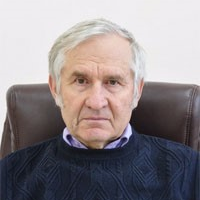Electron-Beam Deposition and Modification of Functional Coatings
A special issue of Coatings (ISSN 2079-6412). This special issue belongs to the section "Surface Characterization, Deposition and Modification".
Deadline for manuscript submissions: closed (31 October 2021) | Viewed by 7962
Special Issue Editor
Interests: electron beams; electron; ion and plasma sources; electron-ion-plasma modification of material surface; physics of high-current electron beam; physics of plasma; physics of vacuum discharges; plasma emission electronics; generation of low-temperature plasma; film and coating deposition; PVD-methods; nitriding
Special Issues, Collections and Topics in MDPI journals
Special Issue Information
Dear colleagues,
We would like to invite you to submit your work to this Special Issue on “Electron-beam deposition and modification of functional coatings.”
As electron beams are highly efficient both in their formation and use, they find increasing application in science and technology. The number of such applications is increasing as electron-beam equipment is developed and the irradiation processes of electron beams on materials are studied. The purpose of the present Special Issue is to highlight the current state of and trends in research and technology, development, and use of electron beams with the widest range of their parameters, from continuous to pulsed, from low- to high-current, and from low- to high-energy. Electron beams are widely and efficiently used to create various kinds of functional coatings as well as to improve the properties of coatings produced by other methods.
One characteristic of electron-beam deposition is the high purity and reproducibility of the process due to the use of high vacuum. The produced coatings are non-porous and high-density; they can be multi-component.
The trend of modern technologies is to use a hybrid method, combining the coatings deposition and electron-beam treatment (for example) to improve their properties in a single vacuum cycle. It is possible to achieve results that are not realized using spatially separated processes (deposition and electron-beam treatment). These processes and the results of their use are intended to be covered in the Special Issue.
In particular, the topics of interest include but are not limited to:
- Equipment for an electron-beam deposition and modification of material surface
- Processes of electron-beam deposition
- Electron-beam modification of material surface
- Properties of electron-beam coatings
- Complex electron-beam and ion-plasma engineering of material surface
This Special Issue is seeking original and review articles presented by the leading collectives and scientists of the world scientific community in the field of electron-beam equipment and technologies. We hope these papers will demonstrate some of the most significant works performed in recent years as well as trends in the development of this promising scientific and technological direction and its interaction with related areas.
Prof. Nikolay KovalGuest Editor
Manuscript Submission Information
Manuscripts should be submitted online at www.mdpi.com by registering and logging in to this website. Once you are registered, click here to go to the submission form. Manuscripts can be submitted until the deadline. All submissions that pass pre-check are peer-reviewed. Accepted papers will be published continuously in the journal (as soon as accepted) and will be listed together on the special issue website. Research articles, review articles as well as short communications are invited. For planned papers, a title and short abstract (about 100 words) can be sent to the Editorial Office for announcement on this website.
Submitted manuscripts should not have been published previously, nor be under consideration for publication elsewhere (except conference proceedings papers). All manuscripts are thoroughly refereed through a single-blind peer-review process. A guide for authors and other relevant information for submission of manuscripts is available on the Instructions for Authors page. Coatings is an international peer-reviewed open access monthly journal published by MDPI.
Please visit the Instructions for Authors page before submitting a manuscript. The Article Processing Charge (APC) for publication in this open access journal is 2600 CHF (Swiss Francs). Submitted papers should be well formatted and use good English. Authors may use MDPI's English editing service prior to publication or during author revisions.
Keywords
- electron beams
- electron-beam deposition
- electron-beam modification
- functional coatings
- coating properties
- combined processes of surface modification
- coating application





